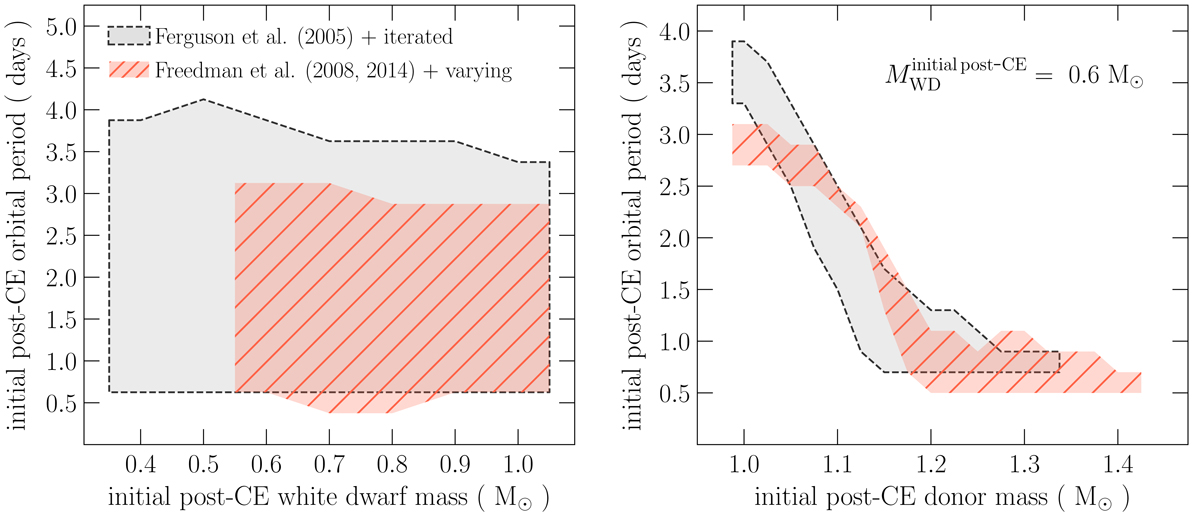Fig. 8.

Download original image
Initial parameters of post-CE binaries that first evolve to CVs and subsequently to AM CVn binaries if the CARB prescription is adopted for magnetic braking for two different choices of opacities and how they are calculated throughout the atmosphere (shaded regions). To build the four shaded regions, we took into account the uncertainties given by the resolution of our grid of models, corresponding to half the step in white dwarf mass and in orbital period. Left: taking into account the full range of considered masses for the companion, systems that evolve into AM CVn binaries cover a large range of orbital periods and white dwarf masses. For our standard assumptions, however, models with initial post-CE white dwarf masses lower than ∼0.55 M⊙ evolve into dynamically unstable mass transfer at the onset of mass transfer and thus do not lead to AM CVn binaries (red hatched region). If the opacity from Ferguson et al. (2005) coupled with a different treatment of how they are computed is adopted instead, we get dynamically stable mass transfer even for initial post-CE white dwarf and companion masses of ∼0.4 − 0.5 and 1.3 M⊙ (grey shaded region). Thus, if magnetic braking is sufficiently strong, no fine tuning is need to produce AM CVn binaries from CVs. Right: a finer grid calculated for a fixed white dwarf mass (0.6 M⊙) illustrates a relation between orbital period and companion mass. The higher the companion mass, the shorter the orbital period. See Sect. 4.4 for more details.
Current usage metrics show cumulative count of Article Views (full-text article views including HTML views, PDF and ePub downloads, according to the available data) and Abstracts Views on Vision4Press platform.
Data correspond to usage on the plateform after 2015. The current usage metrics is available 48-96 hours after online publication and is updated daily on week days.
Initial download of the metrics may take a while.


